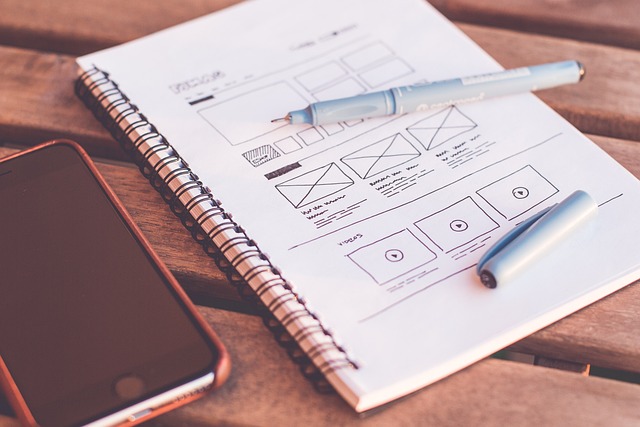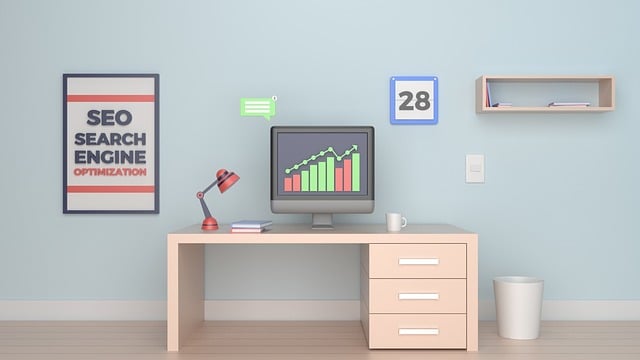Web design made affordable offers high-quality websites at accessible costs for small businesses and individuals. Using user-friendly tools and templates, it prioritizes simplicity, functionality, and aesthetics without breaking the bank. This democratizes online presence, enabling startups and small businesses to compete effectively with professionals. When choosing an affordable web designer, focus on portfolio, experience, communication, and past projects. Effective web design considers user experience, accessibility, and SEO. Examples prove that beautiful, engaging websites can be achieved on tight budgets without compromising aesthetics or effectiveness.
Web design doesn’t have to break the bank. Discover the benefits and strategies behind achieving affordable yet quality web design. From defining the concept to choosing designers and avoiding pitfalls, this article covers key factors for creating a successful website without compromising aesthetics or functionality. Explore popular cost-cutting tools, trending future predictions, and real-world examples that demonstrate it’s possible to have an impactful online presence on a budget.
Understanding Affordable Web Design: Defining the Concept

Affordable web design is a concept that has gained significant traction in today’s digital landscape. It refers to creating high-quality websites at a cost that is accessible to small businesses and individuals who might otherwise be deterred by the perceived expense of professional web development. By definition, this approach prioritizes value for money without compromising on aesthetics or functionality.
The essence of affordable web design lies in leveraging readily available tools and resources, streamlined processes, and a focus on simplicity. Designers and developers adopt user-friendly platforms, templates, and coding practices to minimize time and resource investment while ensuring the end product is responsive, user-friendly, and visually appealing. This strategy not only makes high-quality web design more affordable but also democratizes access to online presence for a broader range of users.
Benefits of Investing in an Affordable yet Quality Web Design

Investing in an affordable yet quality web design offers a multitude of benefits for businesses and individuals alike. Firstly, it ensures accessibility; a well-designed website is easier to navigate and use, attracting a broader audience. This inclusivity can significantly enhance user engagement, as a clean and intuitive layout encourages visitors to explore and interact with your content.
Moreover, an affordable web design solution provides a cost-effective way to establish a professional online presence. It allows startups and small businesses to compete in the digital marketplace without breaking the bank. A quality design still conveys reliability and expertise, fostering trust among potential customers or clients. This strategic move can lead to increased conversions and better business outcomes.
Key Factors to Consider When Choosing an Affordable Web Designer

When choosing an affordable web designer, 1. Portfolio and Experience should be your starting point. Assess their past work to gauge their design aesthetic and technical prowess. Look for projects similar to yours in terms of scope and industry to ensure they have the relevant experience.
2. Communication and Clarity are paramount. A good web designer will actively listen to your vision, offer constructive feedback, and provide transparent pricing and project timelines. Ask for references from previous clients and reach out to them for insights on their experience working with the designer.
Popular Strategies for Reducing Web Design Costs Without Compromising Quality

Examples of Successful Affordable Web Designs

When considering affordable web design, looking at successful examples can offer valuable insights. One notable example is Nonprofit organizations’ websites. Many NGOs have created stunning and effective sites on tight budgets by focusing on clean, minimalist designs with clear calls to action. This strategy not only ensures a user-friendly experience but also emphasizes the organization’s mission.
Another inspiring case is small business startups. These enterprises often leverage low-cost website builders and creative branding to craft visually appealing and engaging online presences. By telling their unique stories through compelling visuals and concise content, they attract customers and establish themselves in the market, proving that a beautiful and effective web design isn’t exclusive to expensive agencies.
Common Pitfalls to Avoid When Opting for Budget-Friendly Web Design

Tools and Resources for Creating an Affordable yet Effective Website

Creating an affordable website is now more accessible than ever thanks to a plethora of tools and resources available online. For beginners, WordPress offers an intuitive drag-and-drop page builder, enabling users to design professional-looking sites without coding knowledge. Additionally, pre-built templates cater to various industries, saving time and money.
For those seeking more customization, platforms like Wix and Squarespace provide comprehensive suites of design elements, graphics, and fonts. These user-friendly interfaces allow for seamless integration of media content, e-commerce functionality, and responsive designs that adapt to different devices. Moreover, many offer affordable subscription plans suitable for small businesses and personal projects alike.
The Future of Affordable Web Design: Trends and Predictions

The future of affordable web design is bright, driven by technological advancements and a growing demand for digital accessibility. As platforms and tools continue to democratize website creation, we can expect to see even more diverse and dynamic online experiences. AI-powered templates and drag-and-drop builders will become increasingly sophisticated, allowing non-technical users to craft professional-looking sites with ease and efficiency.
Mobile responsiveness will remain paramount, as the majority of internet traffic continues to originate from smartphones and tablets. Design trends will further prioritize user experience, focusing on intuitive navigation, clean layouts, and fast loading times. Additionally, personalized content delivery and interactive elements will foster deeper engagement, creating more immersive and impactful online interactions.
